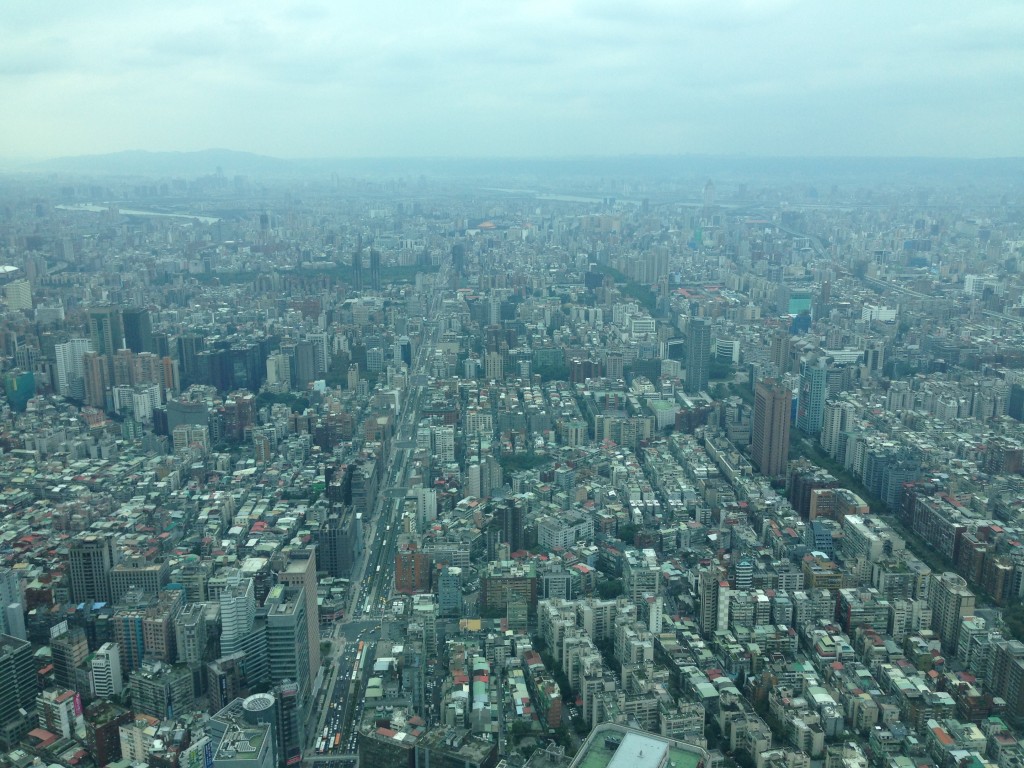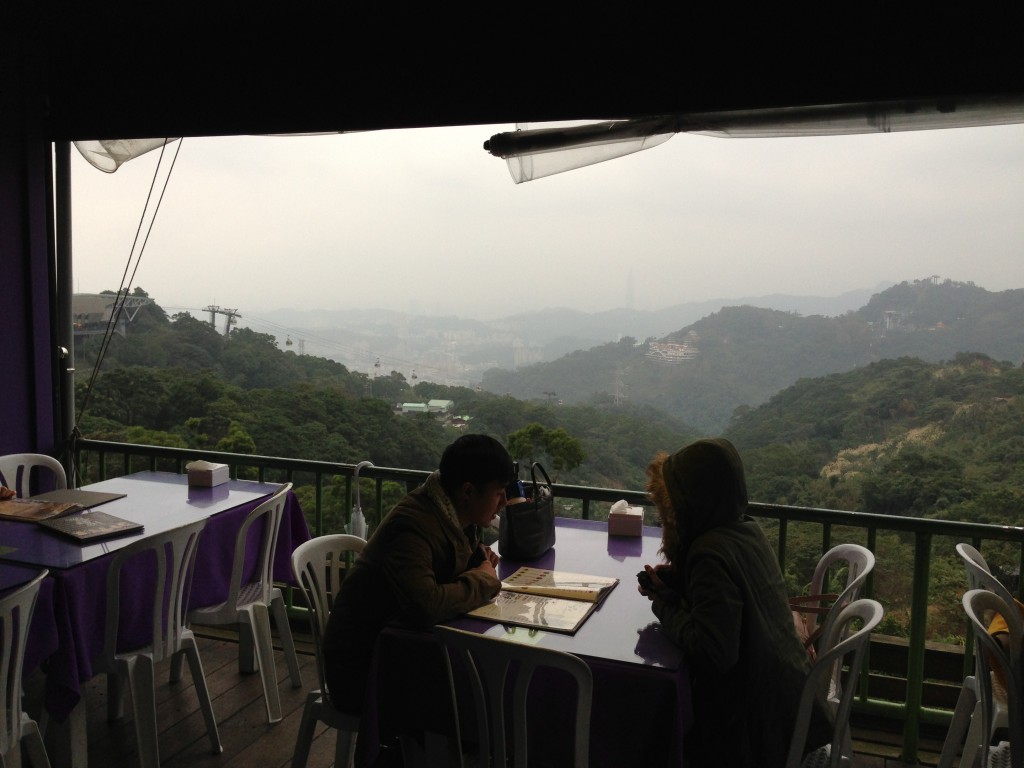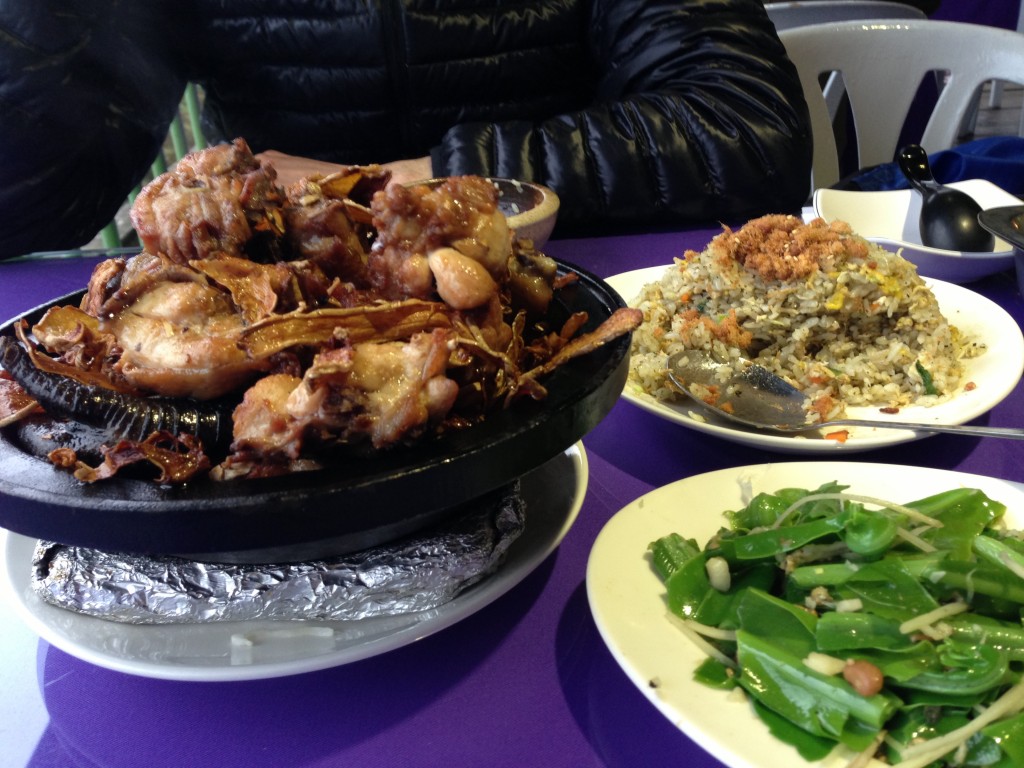Smart Asia Getaways
Discover Asia, the smart way
Two Views – Taipei 101 and Maokong Gondola (with Video)
The 101 almost had us.
All the way from the ticket queue, to the photo booth in line for the elevator, to the 89th floor, to the free self-guided audio tour, I was ready to hand it to the 101 tour: like the Sky Terrace in Hong Kong, they did tourist-trap-kitsch with class. Then came the forced death-march through the gemstone gift shop as prerequisite to alight the building, and I couldn’t hang.
101, it’s not you, it’s me. I’m sure you’ll find someone great and I don’t want to waste your time. Hate the game.
Luckily, for pennies-on-the-dollar of a 101 experience (which runs you a little more than $15 US per person), there’s a truly transformative day trip that most people in Taipei ignore because it’s not the latest thing, meaning shorter lines for you.
I’m taking about the Maokong Gondola.
At the southern end of the elevated brown line, at a stop called Taipei Zoo, you can board a gondola that takes you to another world. Imagine if, from the Smith and 9th street subway stop in Brooklyn, you could grab a chairlift to the top of Aspen Mountain. This is a little like that.
They’ve engineered all the hassle out of the experience. Ticket lines are short, and that’s because you can use your Yoyo Card (see my Taiwan public transportation article) to board the gondola. If you’ve ever been skiing this will be old-hat for you, but the city views – even with a little smog – are amazing.
I made a handy video of part of the experience.
My grasp of the history of the gondola, as I freely admit in the video, is dubious-at-best.
It’s a working-man’s version of the mountaintop fare at Beitou, and a smart-person’s alternative to the 101.
Four Brothers Restaurant (四哥的店)
No. 33-1, Lane 38, Section 3, Zhǐnán Rd, Wenshan District, Taipei City, Taiwan 116 (yes this works on Google Maps, yes it is that easy)
At the terminus, you’re perched atop a mountain ridge.
Roads go in two directions, and you can follow them for miles – enjoying valley vistas and narrowly avoiding death at the hands of the ubiquitous motorcyclists and shuttle busses – or you can hop off after a quarter-mile, at Si Ge De Dian (四哥的店), or Four Brothers Restaurant, at the above address, second and third floor.
As I allude to in the video, Maokong is famous for its tea. But that’s a bit of an understatement. It’s really the Napa Valley of tea. Tea plants carpet the hillsides, and family-owned tea shops dot the roadside every few hundred yards. In my two visits I’ve patronized two, and both were excellent. Si Ge De Dian, which I describe in this article, is a far shorter walk.
It’s true, these tea joints are tourist traps. And they could charge way more and serve you crap and get away with it. But they don’t. Si Ge offers a menu typical of the area: artisanal teas, and an inspired, tea-themed menu to go with them. We ordered tea tree oil chicken on-the-bone, fried rice, and “shan su” (山蘇), or “mountain fern”, stir-fried with dried sardines.
It’s a working-man’s version of the mountaintop fare at Beitou, and a smart-person’s alternative to the 101.
From the base of the gondola you can take a quick bus or cab ride to ShenKeng Lao Jie (Shenkeng Old Street), reputed to produce some of the world’s most unique tofu. For reasons I describe in the hotel review, we had to tap early, but look for a Shenkeng review in a future article.




Pingback: How to Call or Text Internationally for Free (or Cheap) | Smart Asia Getaways